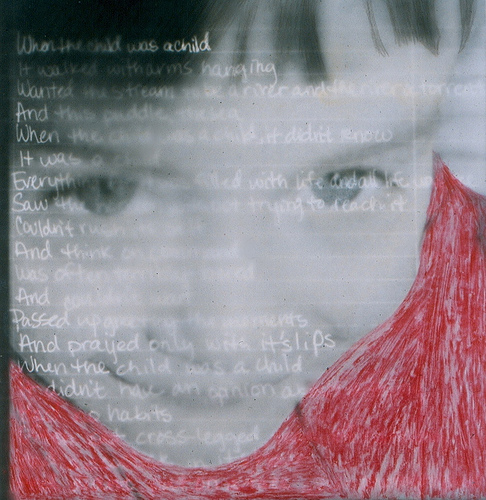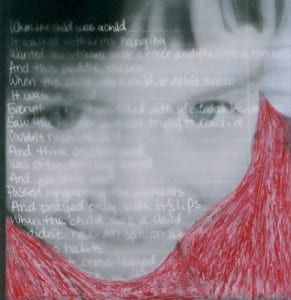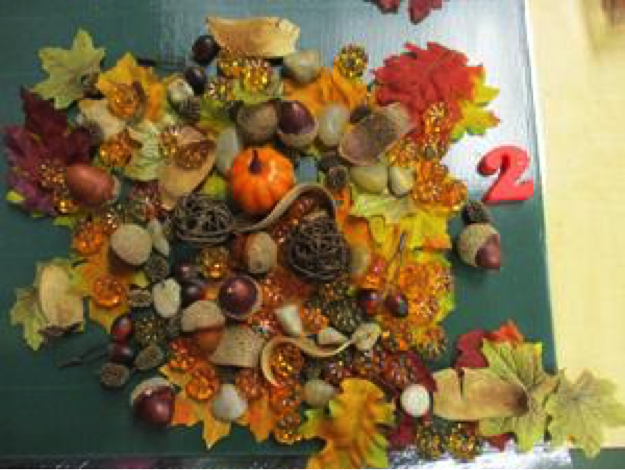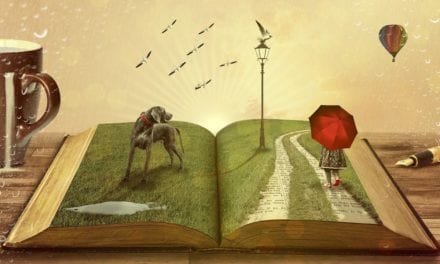Crowded Tub
There are too many kids in this tub.
There are too many elbows to scrub.
I just washed a behind that I’m sure wasn’t mine.
There are too many kids in this tub.
– Shel Silverstein
© Shel Silverstein, reprinted from A Light in the Attic published by Harper Collins
For the past couple of years now, this is the poem I use to start my lecture on teaching poetry to my second year elementary pre-service teachers at McGill University. Reason being….it makes me laugh and I can recite it by heart with lots of emotion. It is then followed by a couple more silly ones such as this gem.
Falling Asleep in Class
I fell asleep in class today,
as I was awfully bored.
I laid my head upon my desk
and closed my eyes and snored.
I woke to find a piece of paper
sticking to my face.
I’d slobbered on my textbooks,
and my hair was a disgrace.
My clothes were badly rumpled,
and my eyes were glazed and red.
My binder left a three-ring
indentation in my head.
I slept through class, and probably
I would have slept some more,
except my students woke me
as they headed out the door.
– Kenn Nesbitt
© Kenn Nesbitt, reprinted from If Kids Ruled the School published by Meadowbrook Press.
And then, very quietly, I change the slide and start to recite another poem. The boisterous and giddy group suddenly, as if by magic, simply stops chatting and laughing and moving around in their seats. You can actually feel the mood change in the large auditorium. I swear it almost even drops a degree or two. And as they sit and listen, you can see them deep in thought. Many of them transported to another time and place.
On Turning Ten
The whole idea of it makes me feel
like I’m coming down with something,
something worse than any stomach ache
or the headaches I get from reading in bad light–
a kind of measles of the spirit,
a mumps of the psyche,
a disfiguring chicken pox of the soul.
You tell me it is too early to be looking back,
but that is because you have forgotten
the perfect simplicity of being one
and the beautiful complexity introduced by two.
But I can lie on my bed and remember every digit.
At four I was an Arabian wizard.
I could make myself invisible
by drinking a glass of milk a certain way.
At seven I was a soldier, at nine a prince.
But now I am mostly at the window
watching the late afternoon light.
Back then it never fell so solemnly
against the side of my tree house,
and my bicycle never leaned against the garage
as it does today,
all the dark blue speed drained out of it.
This is the beginning of sadness, I say to myself,
as I walk through the universe in my sneakers.
It is time to say good-bye to my imaginary friends,
time to turn the first big number.
It seems only yesterday I used to believe
there was nothing under my skin but light.
If you cut me I could shine.
But now when I fall upon the sidewalks of life,
I skin my knees. I bleed.
– Billy Collins
© Billy Collins Included in the book, Sailing Around the Room: New and Selected Poems.
And when I read Billy Collins’ final line, the sad, sorrowful stillness that hangs heavy in the air is broken only by a sigh or two as the young soon to be teachers consider the power that his words hold. It is at that moment they begin to understand that there is something so special about this genre. This is important since “poetry—merely whispering its name frightens everyone away.” They start to see and feel that poetry can affect a person and touch their very inner self in a way like no other form of writing can.
Kenn Nesbitt, the great children’s poet whose poem you read above has written five reasons why he believes that poetry is important and should have a central place in our classrooms. Here is my take on how we can use these reasons as springboards for classroom practice.
Good poetry always makes you FEEL something.
“A good poem will give you goose bumps or butterflies in your stomach, or it will make you cry, or it will make you laugh. Or a good poem will make you feel better when you are sad or grieving.”
As a teacher, consider poetry as medicine for the soul. What ails your class, or a particular student? There is probably a poem or a poet that will help open your students to the emotions that they keep to themselves. Or maybe you want your students to become passionate or empathic about something – like peace or the environment – or make others passionate about something. Reading and writing poetry about the things that move us allow us to move others.
Poetry has power.
“How many people remember, to this day, a poem they learned as children? Well, imagine if your children became little poetry sponges. What would stick in their brains? New vocabulary. New ideas. What would be the result? A bigger imagination. More fun reading. Possibly a lifelong addiction to books. Possibly a desire to write.”
No doubt, poetry has sticking power. The sheer joy of reading poetry aloud, and of reading it well, of feeling the rhyme, meter, alliteration, rhythm wash over you, is equaled only by its ability to stay in your head. Reading poetry to your students, or allowing them to read powerful poems and learn them by heart, are the pathways to a multitude of personal poetic experiences.
Poetry is intimate.
“With poetry, you can express your love, your disgust, your giddy elation, your mild bemusement, your wild imagination or any other feelings you have roiling around inside you.”
After a disaster or other tragedy, teachers all over the world reach for poetry and the arts as a way of getting students to come to terms with what they have experienced. Unfettered by sentence structure and punctuation, poetry allows for the immediate release of pent-up words. Writers at all levels can write out their feelings in a way that resonates with them, and share with others something deep without worrying so much about form.
Poetry is something you can share.
“Sharing poetry doesn’t just mean reading it aloud together either…A poem you wrote can make a better gift to a friend than just about anything money can buy.”
As learners discover the poems that move them, they can share these poems with each other, and with others in their family. The Poetry Foundation’s Record-a-poem initiative asks people to record themselves reading their favourite poem, paying hommage to the idea that poetry is meant to be shared as a way of providing insight not just into the heart and meaning of the poem, but also insight into the reader who made the choice.
Poetry will get your kids reading and maybe even writing.
“You see, kids don’t just read poetry once. They read it again and again and again.”
The immediacy and ease of writing poetry (at least, that is what it can be, if you present it as such) can lure reluctant writers into the realm of words. A gateway to self-expression with words, poetry will appeal as a genre for both reading and writing. Poems can be short, but loaded with meaning, and thus appear non-threatening and manageable.
The discussion in my class then goes on to recalling the way that so many of these bright eyed future teachers were they themselves taught poetry when they were so young and impressionable. Sadly, many of them share that they were instantly turned off of this beautiful, rich genre because all they were ever asked to do was to deconstruct the poem to discover the hidden meaning. They became so sick of this procedure, especially because they were often told time and again that their interpretations were wrong, that they simply didn’t want to ever consider bringing this delightful form of literacy learning into classrooms of their own. I reassure them, and tell them that I understand why they feel the way they do. I then recite for them Robert Frost’s Stopping by Woods on a Snowy Evening, a classic from my grade 5 years that I as a student had to pull apart line by line. They sit and nod empathetically, and then I put up this poem
After English Class
I used to like “Stopping by Woods on a Snowy Evening.”
I liked the coming darkness,
The jingle of harness bells, breaking—and adding to
-the stillness,
The gentle drift of snow. . . .
But today, the teacher told us what everything stood for,
The woods, the horse, the miles to go, the sleep—
They all have “hidden meanings.”
It’s grown so complicated now that,
Next time I drive by,
I don’t think I’ll bother to stop.
– Jean Little
Hey World, Here I Am! published by Kids Can Press
Another burst of laughter and then we talk about how traditionally, poetry was introduced by analysis, and interpretation of the poem; that this dissection of the poem’s meaning and structure was meant to provide insight. Unfortunately, we know it only alienated many people from the world of poetry. Famous children’s poet Lee Bennett Hopkins has explained that he hated poetry in school because he was taught by this same method that he refers to as the DAM approach: dissecting, analyzing and meaningless memorization. So many of us were taught to question why did Robert Frost stop by the woods on a snowy evening and why then did he write a poem about it. Well, who cares–the only one who knows why is Robert Frost. What’s important is that we bring our own experiences to the poem. The real question is, what does the poem mean to you?–not what it meant to him.
The first step in getting your students to read and write poetry is to choose and read poems that are immediately accessible, non-threatening, and relevant to the students’ lives. The goal is to ensure that every one of your students has a positive successful experience with poetry. Do not begin with the most difficult poems but rather select poems that show a range of emotions and a variety of subjects so that your students will get a sense of poetry’s possibilities.
I always end my poetry lecture with the story of a thought-provoking piece by Shirley McPhillips where she discusses an interview of poet Robert Bly. In it, she points out that cultures other than ours have found ways to weave poetry into the fabric of both daily life and ceremony. She shares how Bly was fascinated with the little school children in Iran who would stop by the grave of the famous 14th century poet Hafez and sing his poems to him. He then mused why we didn’t do this here. Why we don’t bring the poets into our hearts as opposed to bringing them only into our heads.
Messengers
There is a country
where children kneel
at the graves of lost poets.
In the morning they come
to the tomb of Hafez
and sing his poems back to him.
In this way, they get associated
with the heart early on,
breathing in messages.
The pull and tear
as the outside world stirs
the linings of some inside sky,
growing orbits of fuel
and fire, outvoicing words,
they become messengers
to the world.
– Shirley McPhillips
This is the power of poetry. This is why it needs to be in each of our classrooms; so that each and every one of our students can for themselves experience what only poetry is capable of doing to our mind, our heart and our soul. It is indeed something to be celebrated and cherished as part of our daily lives…rather than a chore that must be endured.
For further reading/viewing:
A Note Slipped Under the Door: Teaching From Poems We Love by Nick Flynn and Shirley McPhillips
available from Stenhouse Publishers – http://www.stenhouse.com
Bill Moyers interview with Robert Bly – http://youtu.be/e9by9LB-tqY
The Poetry Foundation’s Learning Lab – http://www.poetryfoundation.org/learning/








Several thoughts came to my head as I read this. I remember not only having to memorize the poem, but the punctuation as well and we would have a test – write out the poem by memory. No wonder I was turned off poetry early on!
Another thought was about how many children were exposed to poetry by form rather than by image and emotion. How many still have to write diamantes and acrostics and think more about following the rules of the form than about the content?
And then there are songs – how many students realize that songs are poems to music? How many listen to songs but won’t read poems? I find I connect more to poetry when I hear it. Maybe that frees me from feeling I have to analyze each word and just enjoy the entirety.
As an adult I have played with words and, yes, even written some poems. But they didn’t follow the rules, they followed the heart.
Thanks for getting me thinking.
Humour, please do not apply
Dreams, park them at the door
Hopes and fears, no room for you here
Poetry in short supply.
When I was a teenager, I attended Polish school on Saturdays. We had poetry reading sessions with an expat actress from Krakow who taught us how to read poetry aloud, to declaim it. It would be a regular feature of community events and we even got a semi-regular spot on Montreal’s CFMB Ethnic Radio Polish edition. Reading a poem with intent and feeling made the words powerful and made a language that I didn’t read daily come to life for me. I remember my French teacher M. Jean-Marie Malette reading Soir d’hiver out loud with a melancholy that I could feel… for me, too, poetry comes to life when I can hear it or read it aloud.
I am having fun with the Record-a-Poem project on SoundCloud!
This also brought back a lot of memories. I actually enjoyed both the technical and the emotional experience of poetry throughout my career, but maybe that is just me. I remember being thrilled to death to be able to recite my choice for the entire ten lines of Shakespeare we had to memorize that year in under 10 seconds, winning a bet I had with my teacher. (Ya, that’s probably just me.) But on the other hand, for me the most astonishing presentation of an pedagogical activity with poetry shared by a student-teacher when I was at McGill was when she had us read The Cinnamon Peeler by Michael Ondaatje, after she has passed out cinnamon sticks to everyone in the room! Poetry for me also evokes the senses more easily than prose, both visual as it uses imagery more precisely, but others too.